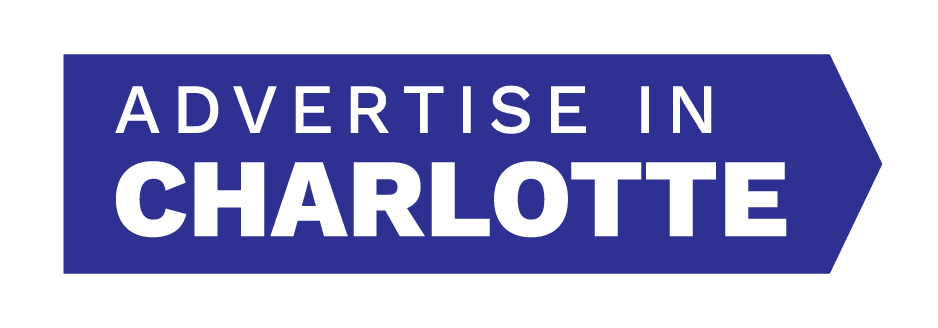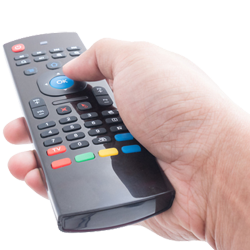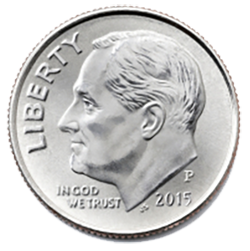According to Nielsen, 1,983,988 adults tune in to their favorite Charlotte radio stations every week. This is significantly more consumers than are reached by all other advertising-supported media, including local TV, local cable, streaming video, social media, online audio, and local newspapers.
Charlotte radio's unchallenged reach is why many local business owners depend on the medium to capture the largest possible share of the $56.2 billion dollars consumers are expected to spend at retail this year.
However, other local small business owners may be surprised to learn that by most marketing metrics, radio remains the best way to advertise in Charlotte.
Here are four more facts about AM/FM radio that may surprise many local marketers.
Read More
Topics
best way to advertise,
radio advertising,
television advertising,
streaming audio,
television,
pay-tv,
cable television,
in car aduio,
in-car audio,
satellite TV,
CTV,
cable tv,
local television,
streaming television,
how to advertise,
streaming TV,
am/fm radio
Every week, according to Nielsen, Charlotte radio reaches 1,983,988 adults. This is more consumers than use any other medium, including local TV, local cable, streaming video, social media, online audio, and newspapers.
Reach, though, is only one component used to calculate ratings. The other metric that contributes to the rating formula is the time spent using each medium. So, although for the past 10 years, AM/FM radio's reach has been significantly higher than the reach of local TV, consumers spent considerably more time watching TV. As a result of the math, TV has enjoyed higher ratings than radio.
For the first time, however, AM/FM radio ratings have exceeded local TV ratings by three percent among the key advertising demographic of 18-49-year-olds, according to Nielsen's Total Audience Data for the third quarter of 2023.
In the Charlotte area, there are 1,425,172 18-49-year-olds, the majority of whom are millennials, a generation that now accounts for nearly one-third of all retail spending.
Read More
Topics
best way to advertise,
radio advertising,
television advertising,
television,
cable television,
advertising on radio,
cable tv,
advertise on Charlotte radio,
local television,
advertising options,
streaming television,
streaming TV,
am/fm radio
The combined weekly reach of Charlotte's broadcast television stations has slipped to 72.5% of all adults, according to Nielsen. These stations include WBTV, WSOC, WNSC, WCNC, and WJZY.
The combined Charlotte TV audience now falls behind cable programming at 74.2% and just ahead of streaming platforms at 66.6%. To put this virtual dead heat into perspective, none of the three video media is a match for Charlotte radio which reaches more than 74.7% of local adults every week.
But although the reach of broadcast TV, cable, and streaming are neck-and-neck, the share of time consumers spend with each of these media is dramatically different.
Read More
Topics
television advertising,
OTT,
streaming media,
television,
cable television,
CTV,
streaming video,
svod,
avod,
cable tv,
local television,
streaming television,
streaming TV
According to Nielsen research, 1.8 million people in the Charlotte area will likely participate in the upcoming election on November 8th. To sway these voters, candidates and political action committees are expected to spend a record amount on advertising.
AdImpact, a company that measures advertising expenditures by political campaigns, says more than $3.6 billion have been spent to reach voters so far in 2022. This puts spending on a course to obliterate the record level of campaign dollars set during the 2020 presidential elections.
Despite crumbling ratings, through August 1st, 58% of all political spending has been dished out to local TV stations, according to AdImpact.
Nielsen reports that since 2017, the reach of broadcast TV stations like WBTV, WSOC, WNSC, WCNC, and WJZY has decayed by 10%.
Read More
Topics
television advertising,
online advertising,
digital advertising,
political advertising,
OTT,
television,
political rates,
CTV,
streaming video,
svod,
avod,
local television,
streaming television,
internet advertising,
streaming TV
During the past seven days. according to Nielsen, only 70.9% of local consumers tuned in to Charlotte television stations like WBTV, WSOC, WNSC, WCNC, and WJZY. TV's diminishing reach among adults 18 and older has been eclipsed by the audience size for social media, cable, and Charlotte radio. Furthermore, streaming video services such as Netflix, Hulu, Prime, and Disney+ are quickly reaching parity with over-the-air options.
The erosion of local TV station audiences is stunning when comparing prime-time ratings from the past. In 1980, the highest-ranked TV show was Cheers with a 21.3 rating. The 30th-ranked show was The Wonder Years with a 14.2 rating.
Twenty years later, Survivor was the number one show with a 17.4 rating and Family Law was the 30th ranked show with an 8.8 rating.
Finally, in 2019, Sunday Night Football was the number one ranked show with a 10.9 rating. Survivor tied with Dancing With The Stars in 30th place with a 5.5 rating.
It is stunning to think that the number one TV show in 2019 had a 24% lower rating than the 30th-ranked show in 1980.
Read More
Topics
best way to advertise,
small business,
small business owner,
television advertising,
small business marketing,
small business advertising,
OTT,
television,
pay-tv,
cable television,
direcTV,
satellite TV,
CTV,
svod,
avod,
cable tv,
local television,
streaming television,
streaming TV
Every week, 2.1 million Charlotte consumers watch something on TV.
Not too many years ago, when a Charlotte consumer sat down to watch TV, the program options were limited to what was on WBTV, WSOC, WNSC, WCNC, WJZY, or, maybe, what was on a handful of cable channels. That was then. This is now.
Today, according to Nielsen, each time a TV is turned on in a Charlotte living room, the viewer has more than 817,000 options not only from broadcast stations and cable systems, but also from streaming video platforms like Netflix, Hulu, Disney+, Peacock, YouTube, Amazon, Tubi, Crackle, and FreeVee.
Of course, Charlotte consumers don't even need to sit down in front of their big-screen LCD, anymore. Most of the 817,000 available programs can also be viewed on their computers, tablets, gaming devices, and smartphones. But as far as viewers are concerned, though, it's all just television.
Read More
Topics
television advertising,
streaming media,
television,
pay-tv,
cable television,
direcTV,
satellite TV,
CTV,
streaming video,
svod,
avod,
cable tv,
local television,
streaming television,
streaming TV
Right now, at least one of the 97,696 businesses located in the Charlotte area is thinking about using the phrase 'March Madness' as part of upcoming advertising and marketing plans. Why not? It's a great use of alliteration. It's a familiar term. And, it's that time of year.
A furniture store in Indian Trail might think it would be clever to use 'March Madness' in its commercials on Charlotte radio to promote a big spring sale. A non-profit in Matthews feels it would be a good way to describe its charity fun run on social media and online advertising. A sports bar in Rock Hill believes it would be a no-brainer to use the term in streaming video and audio ads to bring in scores of basketball fans.
It is, indeed, tempting for a Charlotte small business owner to use this term for advertising or marketing purposes. But, to avoid a costly legal battle, the use of this trademarked phrase should be a non-starter. Here's why.
Read More
Topics
radio advertising,
social media advertising,
television advertising,
online advertising,
OTT,
streaming media,
streaming audio,
CTV,
streaming video,
streaming television,
internet advertising,
display advertising,
search engine marketing,
SEM,
streaming TV,
copyright,
trademark,
intellectual property
Every week, 1.4 million Charlotte area adults watch video programs delivered via the internet. This content goes by several interchangeable names, including OTT (Over-The-Top Television), CTV (Connected TV), and Streaming Video. For this article, we will refer to this type of content as Streaming TV.
Unlike traditional TV, cable, and satellite where the viewer needs to be in a fixed location, Charlotte consumers can access streaming TV anywhere using an internet-connected device. These include SmartTVs, Firesticks, Roku, smartphones, computers, laptops, tablets, and gaming consoles.
In all, according to Nielsen, 95.1% of Charlotte households have one or more devices capable of connecting to streaming TV. Although this medium is still new, streaming TV now rivals legacy media in its ability to reach local consumers.
Every week, Charlotte consumers are spending more-and-more time engaged with streaming TV.
Read More
Topics
television advertising,
OTT,
streaming media,
cable television,
CTV,
streaming video,
svod,
avod,
cable tv,
streaming television,
streaming TV
No matter which Charlotte television station or cable channel adults tune to in 2022, they can expect to be assaulted by a deluge of political advertising. Often entire commercial breaks are stuffed with back-to-back pleas and promises to secure viewers' votes.
But is advertising on WBTV, WSOC, WNSC, WCNC, and WJZY the most effective way to reach likely voters in the Charlotte area? Or is advertising on cable channels provided by Spectrum, DISH, DirecTV, and Google Fiber the way to go?
The answer is neither. According to research from Nielsen, the best way to reach local adults who are most likely to vote is by advertising on Charlotte radio.
Every week, 1.2 million likely voters will listen to Charlotte radio stations. This is significantly more than watch local TV, cable, and streaming video. More that use social media and streaming audio. More than will read newspapers.
Read More
Topics
best way to advertise,
radio advertising,
television advertising,
political advertising,
cable television,
voters,
registered voters,
likely voters,
political rates,
cable tv,
local television,
streaming television,
democrat,
republican
It wasn't too long ago when advertising on Charlotte television stations was considered the gold standard for marketing by local business owners. But over the past few years, the number of viewers reached by WBTV, WSOC, WNSC, WCNC, and WJZY has plummeted. In all only 71% of adult consumers now tune-in to at least one of these channels during the week, according to Nielsen.
The consumption of video content isn't diminishing among Charlotte consumers. What has changed, though, is how they are watching it.
In November, according to Nielsen, the share of time watching broadcast television has fallen behind other video options including cable programing and internet-delivered choices such as Netflix, Hulu, Disney+, and hundreds of other streaming networks.
Read More
Topics
television advertising,
OTT,
streaming media,
television,
pay-tv,
cable television,
direcTV,
satellite TV,
CTV,
streaming video,
svod,
avod,
cable tv,
local television,
streaming television
It used to be so simple. When a small business owner wanted to advertise on Charlotte television, there were only a few options including, WBTV, WSOC, WNSC, WCNC, and WJZY. But slowly, the number of options expanded to include cable channels provided by Spectrum, DISH, DirecTV, and Google Fiber.
Heading in 2022, local advertisers have even more options as internet-connected devices deliver hundreds of more programming choices to North Carolina. Collectively, this type of content is called OTT (Over-The-Top-Television) or CTV (Connected-Television). For the purpose of this discussion, OTT & CTV will be referred to singularly as streaming video.
Streaming video can be viewed on any device that can connect to the internet. This includes computers, laptops, tablets, and smartphones. Programing can also be accessed using a smart-TV, Roku Stick, Amazon Fire Stick, or a game console. In all, according to Nielsen, 95.1% of Charlotte households own a device capable of receiving streaming video.
In all, says Nielsen, 1.4 million consumers watch streaming video content every week. Combined, these internet channels now reach more adults every week than local newspapers, podcasts, and digital audio services like Pandora, Spotify, Sirius/XM. Amazon Music, and iHeart Radio.
Surprisingly, streaming video now reaches almost as many adults as local TV and local cable.
Read More
Topics
television advertising,
online advertising,
digital advertising,
streaming media,
television,
pay-tv,
cable television,
CTV,
streaming video,
cable tv,
advertise in charlotte,
internet,
local television,
streaming television,
internet advertising
Based on projections from the National Retail Federation (NRF), Charlotte consumers are on track to spend $38.8 billion with retailers by the end of this year. This would be 13.5% higher than was spent in 2020.
To earn a significant share of these retail dollars, Charlotte-area business owners are expected to spend $1.1 billion to advertise by year's end, according to Borrell Associates. This company tracks advertising expenditures in local markets across the U.S.
To ensure they are spending their advertising and marketing dollars wisely, many Charlotte business owners research how to best target prospective customers by using local media. An exceptional resource for local business owners to investigate the media habits of localconsumers is on the advice section of AdvertiseInCharlotte.com.
Here are the top five most-read articles on the site in 2021:
Read More
Topics
radio advertising,
social media advertising,
television advertising,
co-op advertising,
cooperative advertising,
online advertising,
digital advertising,
small business advertising,
employment advertising,
recruitment advertising,
endorsement advertising,
facebook advertising,
help wanted advertising,
effective advertising,
advertising on radio,
holiday advertising,
advertising ROI,
advertise on Charlotte radio,
advertise in charlotte,
advertising options,
inter advertising,
how to advertise
Every week, according to Nielsen, 2.5 million adult consumers in Charlotte watch something on television. But, of course, the definition of what it means to watch TV has changed since the time when the number of available viewing options could be counted on the fingers of a single hand.
Today, Charlotte consumers have a gargantuan number of viewing choices. This includes programs from stations like WBTV, WSOC, WNSC, WCNC, and WJZY. Or maybe cable and satellite systems like Spectrum, DISH, DirecTV, and Google Fiber. There's also content delivered over the internet from Netflix, YouTube, Hulu, Disney+, and Amazon Prime.
No longer are Charlotte consumers tied to the 21-inch Zenith in their living rooms. Instead, TV can be watched on giant LCDs, smartphones, and tablets from any room in the house, in the backseat of their cars, or practically anywhere else.
The best way to think about TV watching in Charlotte is in terms of three buckets:
- Over-the-air...including all broadcast channels
- Cable...including all premium and non-premium programming
- Internet...including all streaming services. This is also known as OTT or CTV
Here's how many Charlotte adult viewers fall into each bucket. Remember, viewers are not limited to a single bucket.
Read More
Topics
best way to advertise,
television advertising,
OTT,
streaming media,
television,
pay-tv,
cable television,
direcTV,
dish network,
CTV,
streaming video,
cable tv,
internet,
local television,
streaming television
Charlotte business owners are expected to spend $167,546,000 on streaming video advertising in 2021, according to Borrell Associates, a company that tracks online marketing expenditures across the country. This spending will be 21% higher than in 2020.
Streaming video advertising expenditures are accelerating as Charlotte consumers continue to abandon shows on local TV stations and cable systems in favor of programming streamed via an internet connection. These online channels include Netflix, Hulu, Prime, Disney+, Paramount+, Peacock, Prime Video, Roku Channel, SlingTV, PlutoTV, and dozens more.
This type of streamed video content is known collectively as OTT (Over-The-Top-Television) or CTV (Connected-Television). These two terms are sometimes used interchangeably but do have a subtle difference.
OTT generally means the video is watched on a small device like a computer, tablet, or smartphone. CTV, on the other hand, typically means the content is viewed on a smart-TV or a regular television using a streaming device like a Roku or Amazon stick.
In Charlotte, according to Nielsen, OTT/CTV has exceeded the weekly reach of local newspapers and streaming audio services such as Pandora and Spotify. The medium is rapidly approaching the reach of local cable and broadcast TV stations.
Read More
Topics
television advertising,
online advertising,
digital advertising,
OTT,
streaming media,
streaming audio,
cable television,
CTV,
streaming video,
cable tv,
advertise in charlotte,
local television,
streaming television,
inter advertising
Broadcast television came to Charlotte in 1949 when WBTV-TV signed on for the first time. In those days, only about 0.5% of local households actually owned a set, a number that would grow 100-fold by the mid-1950s.
At first, Charlotte consumers needed rabbit-ears or outdoor antennas to receive signals from a small handful of local stations, including WSOC and WAYS (now WCCB). The quality of reception varied day-to-day.
By the early 1960s, however, local cable systems began to bring higher-quality, reliable reception to households throughout the Charlotte area. The number of programming options, though, remained limited to affiliates of ABC, NBC, and CBS.
In 1972, viewing options began to expand as local cable began offering Charlotte area consumers the opportunity to purchase premium services, including HBO, Showtime, and Cinemax. Five years later came an explosion of non-premium cable channels such as TBS and CNN.
In the early 1990s, Charlotte viewers could not only receive their television programming over-the-air or by cable, but options expanded to include satellite delivery by DishTV and DirectTV.
The next TV innovation came in 2007 as Charlotte consumers started turning to the internet to watch streaming channels like Netflix and Hulu. These new services allowed viewers to watch TV on their phones, computers, and tablets as well as their living room LCD and Plasma screens.
Today, all of this video technology offers viewers the ultimate flexibility to choose how, when, and where to watch TV. So, what are they watching?
Read More
Topics
television advertising,
OTT,
streaming media,
television,
cable television,
CTV,
streaming video,
svod,
avod,
cable tv,
local television
As the pandemic rages on, advertising is no longer a luxury for the
92,000 small businesses in the Charlotte-Concord-Gastonia, NC-SC metro area
.
Advertising has become a tool for survival.
As cash becomes precious, though, Charlotte area small business owners and retailers need to ensure that every dollar spent on advertising has a significant effect on sales.
To make the best advertising choices, thousands of local business owners have sought advice and direction from
www.AdvertiseInCharlotte.om. Here is a recap of the top 5 articles read on the site during 2020.
Read More
Topics
radio advertising,
small business,
small business owner,
television advertising,
newspaper advertising,
newspaper readers,
small business marketing,
small business advertising,
OTT,
television,
pay-tv,
cable television,
radio listening,
CTV,
svod,
avod,
cable tv,
2020
There is cheerful news for small business owners from Davidson to Matthews and every city and town in between.
Based on the latest projections from the National Retail Federation, holiday sales are expected to grow 3.6%-5.2% over 2019. This means despite the economic ravages of the pandemic, Charlotte area shoppers will be spending between $6.4 and $6.5 billion on gifts and other trappings of the season.
The NRF forecast is based on an economic model that takes into consideration a variety of indicators including employment, wages, consumer confidence, disposable income, consumer credit, previous retail sales and weather. NRF defines the holiday season as November 1 through December 31. Numbers forecast by NRF may differ from other organizations that define the holiday season as a longer period or include retail sectors not included by NRF, such as automobile dealers, gasoline stations and restaurants.
"Consumers have shown they are excited about the holidays and are willing to spend on gifts that lift the spirits of family and friends after such a challenging year," says NRF President and CEO Matthew Shay. "We expect a strong finish to the holiday season."
“Given the pandemic, there is uncertainty about consumers’ willingness to spend, but with the economy improving most have the ability to spend,” NRF Chief Economist Jack Kleinhenz said. “Consumers have experienced a difficult year but will likely spend more than anyone would have expected just a few months ago."
Read More
Topics
consumer spending,
small business,
small business owner,
television advertising,
roi,
return on investment,
small business marketing,
small business advertising,
retail spending,
retail,
television,
retail sales,
retail stores,
retailer,
cable television,
holiday advertising,
holiday shopping,
christmas,
advertising ROI,
consumer confidence
Every week, according to Nielsen, significantly more consumers are reached by local radio than by Charlotte TV.
For Charlotte small business owners whose marketing budgets have been ravaged by the pandemic, though, the question is which of these media can provide the best return for their advertising investments. An ROI study conducted by Nielsen and commissioned by Cumulus Media | Westwood One provides a conclusive answer.
Between April 30 and May 27 of this year, Nielsen analyzed the sales results of a major retailer who conducted an advertising campaign on both radio and television during that period.
Using their Portable People Meter panel of 80,000 consumers, Nielsen measured the purchase behavior of consumers who were exposed to the advertiser's commercials on both radio and television. To learn more about the methodology, click here.
The result of the study indicates that the money invested in radio advertising had a much stronger return than the money spent on TV.
Here are the key findings of the ROI study:
Read More
Topics
radio advertising,
small business,
small business owner,
television advertising,
roi,
return on investment,
small business marketing,
small business advertising,
retail spending,
retail,
television,
retail sales,
retail stores,
retailer,
cable television,
advertising ROI
Before we explain AVOD, it is important to understand SVOD.
Charlotte small business owners may not be familiar with SVOD, but chances are they let it into their homes and onto their phones.
SVOD is the abbreviation for Subscription Video On Demand. That is the collective name for streaming networks like Netflix, Hulu, Disney+, and Amazon Prime. For a monthly fee, these services provide commercial-free access to TV shows, original content, and movies.
These SVOD networks are delivered to viewers' phones, tablets, computers, and smart-TVs via the internet and not over-the-air or cable systems.
SVOD makes up a significant part of what advertisers refer to as OTT (Over-The-Top-Television) and CTV (Connected-Television). OTT/CTV is video-programming content that viewers can only watch on smartphones, tablets, computers, smart-TVs, Amazon Firesticks, and Roku Sticks. Nielsen reports that 92.3% of Charlotte adults own at least one of these devices.
Read More
Topics
best way to advertise,
small business,
small business owner,
television advertising,
small business marketing,
small business advertising,
OTT,
streaming media,
television,
cable television,
CTV,
streaming video,
svod,
avod
Advertising on Charlotte television and cable is becoming less attractive to local business owners as viewers rapidly defect to alternative video entertainment sources including, Netflix, YouTube, Hulu, Amazon and Disney+.
Collectively these streaming services are referred to as Over-The-Top Television (OTT) and Connected-TV (CTV). Viewers can only access this OTT and CTV content via smartphone, tablets, computers, smart-TVs, Amazon Fire Sticks, and Roku Sticks, Nielsen reports that 92.3% of Charlotte adults own at least one these devices. Furthermore, they are using them.
According to Nielsen, OTT and CTV networks now reach 43.4% of all Charlotte consumers every week.
Read More
Topics
best way to advertise,
radio advertising,
small business,
small business owner,
television advertising,
small business marketing,
small business advertising,
OTT,
streaming media,
television,
pay-tv,
cable television,
advertise on radio,
CTV,
streaming video
More than one-third of Charlotte area households are 'cord-cutters' or 'cord-nevers'. This means, they have fired their cable or satellite television providers or never subscribed at all. Instead, these consumers are choosing to find their video entertainment elsewhere.
The number of local homes that subscribe to pay-TV services began plummeting in 2013. New technologies has allowed viewers to bypass cable and satellite for more compelling content at lower prices. These cord-cutters now depend on services like Netflix, Hulu, Disney+, and Amazon Prime to fill their multiple screens.
For many years, Charlotte small business owners have been investing a significant portion of their advertising budgets into cable-TV. The medium had proven to be a low-cost, high-reach alternative to buying commercial on over-the-air television stations.
Now, because of cord-cutting, there are 748,000 adult consumers with unconnected TVs. This profoundly diminishes the value proposition of advertising with local cable systems.
There is a powerful and affordable solution, however, for small business owners to reach both the diminishing cable audience and the expanding number of cord-cutters.
Read More
Topics
best way to advertise,
radio advertising,
small business,
small business owner,
television advertising,
small business marketing,
small business advertising,
television,
pay-tv,
cable television,
advertise on radio,
radio commercials,
cord-cutter,
cord-never,
satellite TV
Type "CHARLOTTE REAL ESTATE AGENTS" into Google. In slightly over a half-second, the search will deliver 350,0000,000 results. Similar searches for Matthews, Mount Holly, Huntersville, Indian Trail, Gastonia, or Rock Hill produce a proportional number of returns.
Despite the economic hardships imposed by the Coronavirus crisis on Charlotte area consumers, the demand for real estate is booming.
The Wall Street Journal published a trend yesterday indicating that mortgage applications for purchase a home have achieved levels equal to last year.
According to redfin.com, home buying demand is 16.5% higher now than it was pre-COVID-19 on a seasonally adjusted basis.
Redfin attributes this explosive growth in real estate shoppers to two factors, including record-low mortgage rates. The other primary driver is a migration trend from expensive metropolitan areas as buyers hunt for more space at lower prices.
To capture a larger share of the robust market, local real estate agents need to stand apart from the millions of Google results. Advertising on Charlotte radio will help accomplish this. Here's why.
Read More
Topics
best way to advertise,
social media advertising,
small business,
small business owner,
television advertising,
newspaper advertising,
online advertising,
small business advertising,
home buyers,
real estate,
real estate agent,
streaming audio,
pay-tv,
home sellers,
advertise on radio
Pay-TV is struggling to survive COVID-19.
Before the onset of the pandemic, Nielsen reported that 61.4% of Charlotte area households received their television programs from cable systems, telephone companies, or satellite operators. That number, however, is plummeting.
Pay-TV providers in the Charlotte area include AT&T TV, Dish, Spectrum, Google Fiber, and DirecTV.
"Cord-cutting, people dropping their cable and satellite TV subscriptions, pre-dates the onset of Covid-19. But the pandemic is exaggerating the trend, creating deeper issuers for programming that relies on those services for distribution," Eric Savitz wrote last week in Barron's. This includes non-premium services like ESPN, TBS, TNT, USA, CNN, and Discovery.
"LightShed Partners analyst Richard Greenfield counts a loss of 1.96 million subscribers to cable, satellite TV, and virtual cable services combined in the first quarter," Savitz continued. "This is the worst combined quarterly drop ever, down 6% from a year ago."
Greenfield said in an interview with Barron’s that what is especially sobering is that most of the first quarter activity pre-dated the virus. The numbers are likely to get considerably worse in the second quarter.
Read More
Topics
best way to advertise,
radio advertising,
small business,
small business owner,
television advertising,
millennials,
pay-tv,
cable television,
direcTV,
dish network
Every week, 1,827,300 adult consumers tune-in to a Charlotte radio station. That is way more than are reached by other media, including local television, newspaper, social media, or streaming audio sites like Pandora and Spotify.
A more significant number for thousands of North Carolina small business owners who advertise on Charlotte radio is how many of these listeners stick around when their commercials come on.
A 2011 Nielsen study discovered that, on average, 93% of listeners stayed with the radio station they are tuned-to when the commercials come on. That number amazed many advertisers at the time who believed that audiences were far more likely to defect when the music stopped.
A lot has changed since 2011. Charlotte area consumers have many more media options and can instantly connect to each with a button-push, mouse-click, screen-tap, or voice command. With all of these choices, do radio audiences still stay tuned during commercial breaks?
Read More
Topics
best way to advertise,
radio advertising,
social media advertising,
instagram,
small business,
small business owner,
television advertising,
newspaper advertising,
facebook,
spotify,
pandora,
online advertising,
social media,
streaming audio,
button pushing
The chaos created in North Carolina by the onset of Coronavirus has been a disruptive force among consumers.
Work routines, buying habits, family life, and media consumption have all been palpably affected. These are all factors that need to be considered by small business owners who continue to advertise their goods and services during the crisis.
Before the current chaos, advertising on Charlotte radio, by any metric, was the best way a local small business could advertise.
For instance, pre-Coronavirus, 1.8 million adult consumers tuned-in to a Charlotte radio station every week. This is significantly more than watched local TV, read a newspaper, accessed social media, or streamed audio from sites like Pandora and Spotify.
New research released from Nielsen indicates that amidst the current crisis, listening to local radio remains little changed. This is great news for those Charlotte small business owners who are depending on advertising for their long-term survival.
Read More
Topics
best way to advertise,
radio advertising,
social media advertising,
small business,
small business owner,
television advertising,
newspaper advertising,
online advertising,
digital advertising,
facebook advertising,
corona,
coronavirus,
covid 19,
crisis marketing
Suppose a Charlotte small business owner woke up one morning and found a 100-year-old machine in the basement of her store. She soon discovered that every time a dime was put into the machine, one dollar came out. Imagine, now, how profitable that business would become.
Good news: such a contraption exists, and every business owner probably has one in their car, in their store, in their home, even on their phone. It's called Charlotte radio.
Over the past few years, Nielsen has conducted more than 20 studies to determine what type of return-on-investment (ROI) a business owner can expect from radio advertising. Although the results varied by industry, the average company generated $100 in sales for every $10 invested. Turning dimes into dollars.
Read More
Topics
best way to advertise,
radio advertising,
social media advertising,
small business,
small business owner,
television advertising,
newspaper advertising,
roi,
return on investment,
wine,
winery,
facebook advertising
Charlotte small business owners are fighting the coronavirus battles on multiple fronts. Their first objective is to keep their families and employees safe. Then, of course, there are the concerns of keeping their businesses healthy enough to survive current disruptions.
The business literature has an abundance of case studies showing how survival is often connected to a thoughtful communications and marketing strategy during challenging times.
Business owners need to let North Carolina consumers know if they are still open. If their hours have changed. Or if they are providing alternative shopping methods (e.g., delivery, curbside pick-up).
Most importantly, it is imperative consumers know that a business will still be there for them when the crisis is over.
For those owners who are depending on communication to preserve their business, the best option may be to advertise on Charlotte radio.
Read More
Topics
radio advertising,
social media advertising,
small business,
small business owner,
television advertising,
newspaper advertising,
online advertising,
digital advertising,
retail,
restaurant,
retail stores,
retailer,
facebook advertising,
corona,
coronavirus,
covid 19
"As a non-profit, we have to be very thoughtful about how we spend our marketing funds," says Emily Cook, Marketing and Communications Director at The Humane Society of Charlotte.
"That's why we invest the biggest chunk of our budget in advertising on Charlotte radio. I have the data that proves it works."
Founded in 1978, The Humane Society of Charlotte, HSC for short, is a no-kill animal shelter that takes in more than 3000 homeless cats and dogs each year. "We are able to place nearly every pet taken in into a loving and caring family," says Ms. Cook.
"In addition to pet adoptions, we also have a huge commitment to community outreach," she says. "This includes having three full-time vets on staff who perform more than 12,000 low-cost spay and neuter surgeries per year. This really helps reduce the population of the homeless animals in the area."
HSC also works with members of the community who are temporarily unable to care for their dogs and cats, primarily due to financial hardship. This includes stocking a pet food bank.
"Our goal is to keep these loved animals out of the shelter and in their homes with their families," says Ms. Cook.
It costs HSC more than $4 million each year to fulfill its mission of delivering effective, innovative services that strengthen the human-animal bond and improve the lives of companion animals and the people who care about them.
Read More
Topics
best way to advertise,
radio advertising,
television advertising,
online advertising,
digital advertising,
social media,
non-profit,
charity,
animal welfare,
analytics,
attribution,
billboard advertising
Seven years ago, the first Bisonte Pizza Co. location fired-up its ovens.
"Advertising on Charlotte radio really accelerated our growth," says Jim DaPolito. He and his older brother Steven are the owners and co-founders of the small business.
"Injust three years, with the help of our radio commercials, we had already achieved our year five sales goals."
The brothers were convinced to move to North Carolina from their native Buffalo, New York, by Steven's son, who had moved to Charlotte in 2007.
My son believed that someone could do very well down here serving up Buffalo-style pizza and wings," says Steven. "So, when he told me my first grandchild was on the way, I decided to quit my job in the automotive business in New York and move to Charlotte to open a restaurant."
Fortunately, Jim, who had 38 years in the food business, including running the largest pizza restaurant in the country, decided to make the move with his brother.
Read More
Topics
best way to advertise,
radio advertising,
social media advertising,
small business,
small business owner,
television advertising,
newspaper advertising,
online advertising,
digital advertising,
restaurant,
pizza
Charlotte consumers spent more than $49 billion with retailers last year. The National Retail Federation forecasts 4.1% more will be spent this year.
Who are the shoppers that will be spending all this money?
According to Nielsen, 47.8% of retail dollars are spent by Charlotte area consumers over the age of 50. This may surprise many small business owners because older consumers comprise only 36.6% of the area's adult population.
These older consumers account for the largest share of spending in almost every retail category. This includes furniture, cars, pet supplies, fast food, and electronics.
To earn a share of these massive dollars spent by these older consumers requires Charlotte small business owners to advertise.
Read More
Topics
best way to advertise,
consumer spending,
radio advertising,
social media advertising,
small business,
small business owner,
television advertising,
newspaper advertising,
retail spending,
retail,
store traffic,
retail sales,
baby boomers,
retail stores
Retailers in the Charlotte area rang-up $49,607,009,000 in retail sales last year, according to Nielsen. But wait. It's about to get better.
The National Retail Federation forecasts that in 2020, sales will increase by as much as 4.1%. This will create another $2.1 billion for local small business owners.
“The economy is growing at a more modest pace, but the underlying economic fundamentals remain in place and are positive,” stated NRF chief economist Jack Kleinhenz. “Consumers remain upbeat and have the confidence to spend, and the steady wage growth that has come with the strong job market is fueling their spending. The state of the consumer is very healthy.
To claim a fair share of this enlarged pool of spending will require Charlotte small business owners to advertise.
“Think you have a great product?” asks the U.S. Small Business Administration. “Unfortunately, no one’s going to know about it unless you advertise.”
Read More
Topics
best way to advertise,
consumer spending,
radio advertising,
small business,
small business owner,
television advertising,
newspaper advertising,
facebook,
millennials,
reach,
spotify,
pandora,
online advertising,
digital advertising,
retail spending,
retail,
store traffic,
retail sales
There is alarming news for small business owners who advertise on Charlotte television stations: broadcast TV viewers are disappearing at a rapid pace.
Nielsen reports that halfway through the first quarter of this year, the number of people using television has dropped 7.5%. This compares to -6.3% in the fourth quarter of 2019, and -7.0% a year ago,
"If the trend holds, it would represent the largest quarterly decline for TV viewership in our data set," explains UBS analyst John C. Hodulikadding. "Trends have worsened across most age demos with persons 25-34 now falling -17% vs. low double-digit declines throughout 2019. The persons 55+ demo continues to trend down -2%, similar to 2019 (the first year of declining ratings for the demo)."
Radio listenership, on the other hand, has remained quite stable, according to Nielsen. Since 1970, the medium has reached more than 9-in-10 consumers every week.
Read More
Topics
best way to advertise,
consumer spending,
radio advertising,
small business,
small business owner,
television advertising,
millennials,
reach,
frequency,
branding,
reach & frequency,
television,
generation y,
generation x
How quickly the millennials have grown up.
According to Nielsen, 51% of all Charlotte area parents with children under the age of 18 are millennials.
From the time their kids are born until they reach they are 17, these young parents will spend, on average, $233,000 per child. This does not include the cost of college.
Currently, there are 566,078 children under the age of 18 living in the Charlotte metro area. That makes the local parenting economy worth upwards of $131 billion. These dollars are being spent, among other things, on diapers, daycare, transportation, toys, education, electronics, clothing, and health care.
For North Carolina small business owners interested in competing for a substantial portion of this multi-billion dollar pool of parental cash, they must advertise to millennial moms and dads. By almost any measurement, advertising on Charlotte radio is the best way to reach this audience.
Read More
Topics
best way to advertise,
consumer spending,
radio advertising,
social media advertising,
small business,
small business owner,
television advertising,
newspaper advertising,
facebook,
millennials,
spotify,
pandora,
parent,
children
"In the 24 years I have owned my business, I never advertised," says Andy Huneycutt, founder of Indian Trail based Huneycutt Mechanical Services. "But last year I realized my company was standing still. So, we started advertising on Charlotte radio."
"I did a lot of research," he says, "and I found out that the most successful local companies were investing 8-10% of their gross sales back into advertising. They would do this consistently every year. The more money they made, the more they would advertise."
"As I was growing closer to retirement, I had to ask myself if I could really afford to invest that kind of money into advertising," he says. "Then, I looked at the commitment my son made to take over the business in a few years and realized I couldn't afford not to advertise."
Read More
Topics
best way to advertise,
radio advertising,
social media advertising,
small business,
small business owner,
television advertising,
newspaper advertising,
spotify,
pandora,
online advertising,
branding,
Heating,
brand building,
homeowners,
HVAC,
Cooling
March is the biggest single month for used car sales in the Charlotte area. During these 31 days alone, local pre-owned vehicle dealers are expected to bring in $101 million in sales. This will represent 10% of their annual revenue.
By the end of May, these dealers owners will sell more than $282 million worth of pre-owned cars and trucks. This, undoubtedly, makes March-May 'used car season' in Charlotte.
Although most Charlotte used car dealers are small business owners, they do really big business. In all, over the next 12 months, more than 349,000 pre-owned vehicles will be driven off their lots.
To capture a larger share of the area's $1.1 billion used car market requires pre-owned vehicle dealers to advertise. By any measure, the best way for these business owners to advertise is on Charlotte radio.
Read More
Topics
best way to advertise,
consumer spending,
radio advertising,
social media advertising,
small business,
television advertising,
newspaper advertising,
facebook,
millennials,
online advertising,
digital advertising,
small business marketing,
used vehicles,
automotive,
used cars,
used trucks
Like all small business owners, Charlotte area law firms need to bring in new customers to survive. Unlike brick-and-mortar stores, the first contact many attorneys have with potential clients is on the telephone.
"Every day we advertise on Charlotte radio," says attorney Chris Hall of the city's Emory Law Firm, "we receive 10-12 calls from listeners seeking representation."
"We can track each of these calls back to our radio commercials," he says. "Around 25% of these callers will become paying clients. This is a very high rate of return for the money we are spending."
In the Charlotte area, there are almost 7000 practicing lawyers who compete to represent the 216,000 households who will seek legal representation this year. In all, these services will generate more than $540,000,000 in attorney fees.
To earn a fair share of this billing, area attorneys need to advertise. As Mr. Hall has learned, by most metrics, radio advertising is a powerful way to reach potential clients.
Read More
Topics
best way to advertise,
radio advertising,
small business,
small business owner,
television advertising,
newspaper advertising,
facebook,
online advertising,
digital advertising,
social media,
attorneys,
lawyers,
legal services
Low unemployment, a boom in housing starts, and confident consumers are propelling robust sales for Charlotte area furniture stores.
In 2019, local consumers spent $1.2 billion on furniture and home furnishing. This number is expected to grow.
Based on estimates developed by Furniture Today’s Strategic Insights team and Easy Analytic Software Inc. (EASI), the total furniture and bedding market is projected to expand by more than 22% by 2024.
If a Charlotte area small business owner who sells furniture, furnishings, or home decor would like to grab a larger share of this expanding market, then advertising is necessary. By almost every key metric, advertising on local radio is a sound marketing investment.
Read More
Topics
best way to advertise,
consumer spending,
radio advertising,
social media advertising,
small business,
small business owner,
television advertising,
newspaper advertising,
online advertising,
digital advertising,
retail,
furniture
"At least 40% of our new customers come because of our advertising on Charlotte radio," says Deb Filkins, co-owner of Cougar Run Winery in Concord, NC. "Eighty percent of these first-time customers will become repeat customers."
Ms. Filkins and her husband Tom, who produces all the wine, opened Cougar Run in December 2012 with an inventory of 1500 bottles. The retail store is located in a historic Coca-Cola bottling plant on the city's Church Street
"During our first full month in business, we rang up $100 in sales. Tom and I were ecstatic," says Ms. Filkins.
The winery began to grow modestly drawing customers primarily from the Concord area.
Read More
Topics
best way to advertise,
consumer spending,
radio advertising,
social media advertising,
small business,
small business owner,
television advertising,
newspaper advertising,
retail,
wine,
winery,
store traffic
There is probably not a week that goes by when the 1,827,300 listeners to Charlotte radio don't hear about Sona Dermatology & MedSpa. The company's advertising runs nearly every day.
"We will probably never stop using radio advertising in Charlotte," says Meigan Alexander, Director of Marketing for the company. "Radio has been a part of the company's identity since the beginning."
Sona was founded as a single location MedSpa in 1977 by Byron Ashbridge. "In the beginning," says Ms. Alexander, "most of what we did was laser hair removal."
Today, Sona has 20 offices across the country including one in Charlotte, Huntersville, and Ballantyne. In addition to hair removal, the company now offers CoolSculpting, Botox, skin rejuvenation, and MiraDry.
Although Sona had been advertising successfully on radio for two decades, it became even more critical three years ago.
Read More
Topics
best way to advertise,
radio advertising,
small business,
small business owner,
television advertising,
endorsement advertising,
medspa,
dermatology,
skincare,
DJ endorsements,
branding,
OTT
Many times the difference between winning an election and losing is a handful of ballots. This is true in races for almost every elected office, referendum, and issue on the national, statewide, and local level.
To win a modern election requires advertising. Successful advertising requires reach. In the Charlotte area, the most potent way to reach voters is on local radio.
The Charlotte area includes the North Carolina counties of Anason, Cabarrus, Cleveland, Gaston, Iredell, Lincoln, Mecklenburg, Rowan, Stanly, Union, plus Chester, SC Lancaster, SC and York, SC.
Last week, for instance, 89% of all registered voters in these counties tuned-in to a Charlotte radio station. This is significantly more than were reached by local TV, local newspaper, or the major social media sites like Facebook and Instagram.
Read More
Topics
best way to advertise,
radio advertising,
social media advertising,
television advertising,
newspaper advertising,
facebook,
online advertising,
digital advertising,
political advertising,
issue advertising










































